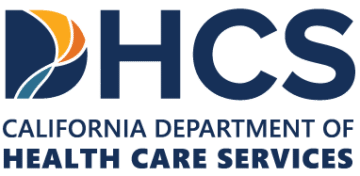

Esketamine is a fascinating compound. Unrefined ketamine used to be known as a common street drug. Now the substance is a revolutionary treatment for prevalent mental health disorders.
Esketamine for depression has become a groundbreaking therapy. For the first time in decades, many people with major depressive disorder (MDD) are experiencing life in color again. It is the first major antidepressant therapy with a new mechanism of action in nearly 60 years.
This brings hope to many with treatment-resistant depression. In this article, we will walk you through everything you need to know before asking your doctor about esketamine for depression.
Esketamine is a derivative of the compound ketamine. Ketamine was an anesthetic used for decades with occasional use for treatment-resistant depression.
But esketamine is specially formulated as a higher potency form of the drug. It is essentially the same molecule with higher potency. Nearly everything that is said about ketamine could also be said about esketamine.
Recently the FDA approved a nasal spray version of esketamine to specifically treat depression. Because esketamine is more potent, you can use a much smaller dose and get the same effects. Theoretically, this will also lower the possible side effects.
Now that the drug has become available per the FDA, it is likely that insurance companies will cover its use.
Esketamine is a unique drug that can temporarily change your sensory perception when you first start using it. Because it can distort your perception, doctors give it to you in clinic. You give yourself three doses with five minutes in between each dose. It is important to remain in clinic under doctor supervision until two hours have passed.
It is also important to take esketamine with an adjunctive medication for depression. Conventional antidepressants like selective serotonin reuptake inhibitors (SSRIs) are a common choice.
The goal for many patients is for esketamine to provide rapid relief. This allows conventional antidepressants the time they need to start working.
The FDA approved esketamine for patients with treatment-resistant depression. To qualify, you need to have previously tried two other antidepressants without success. If you haven’t achieved complete remission or at least a 50% improvement, most doctors will continue to try other treatment options.
To some doctors, the best part of esketamine is that it offers patients hope. It allows patients to see quickly what it is like to live life without depression. Knowing that remission is possible allows them to trust that slower treatments will eventually work over time.
There is so much excitement around esketamine and its parent drug ketamine. The reason is simple; it has a new mechanism of action.
SSRIs and other medications increase levels of neurotransmitters like serotonin, dopamine, and norepinephrine. These molecules are important in carrying signals between brain cells.
If you have more neurotransmitters available, communication between cells improves. Many patients feel better as a result.
Esketamine takes the same idea but applies it to glutamate. It increases levels of glutamate in the brain’s synapses.
Glutamate is the most available chemical messenger in the brain. Esketamine greatly improves its availability further for a large global effect.
FDA approval depended on three short-term studies over four weeks. It also required a maintenance study and one long-term safety study.
Two studies showed clear efficacy. Esketamine rapidly reduced depressive symptoms in patients with treatment-resistant depression.
The first trial examined patients under age 65 who received a dual regimen. This included both an oral antidepressant and intranasal esketamine.
About half of patients in the placebo group saw a 50% reduction in symptoms after one month of treatment. But about 70% of the treatment group saw a 50% reduction at the end of the month. This was a very positive initial sign for the drug’s efficacy.
The second study examined relapse prevention. Even if a drug is efficacious, it needs to prevent future relapses to be truly effective for patients.
This study found that the treatment arm showed a relative 50-70% reduction in the risk of relapse. The control group for this study only received an oral antidepressant.
It can take SSRIs and other conventional depression treatments approximately 2 months to start to take effect. While some patients notice benefits right away, help may not arrive for quite some time.
Esketamine immediately impacts brain cells. It can provide relief for treatment-resistant depression in a matter of hours. It is becoming an essential tool for psychiatrists in challenging mental health situations.
There is concern that SSRIs may actually increase suicidal thoughts initially. Then, this risk decreases over time.
Certain populations like adolescents may be at greater risk for suicidality with SSRIs. But the evidence for SSRIs in children and teens is unclear and the benefits may outweigh the risks over time.
Esketamine, however, is a safe option. Along with lithium, it is one of the only drugs that has demonstrated decreased suicidality rates in conventional studies. The FDA has not approved it for this purpose but it is under consideration.
About a third of all patients with depression are nonresponders to initial treatment. They continue to have symptoms despite an adequate amount of time trialing drugs.
The only other FDA-approved treatment is olanzapine with fluoxetine. This combines an antipsychotic (olanzapine) with an SSRI antidepressant (fluoxetine).
Unfortunately, this combination has a large side effect profile. Weight gain, poor metabolism, hypertension (high blood pressure), and diabetes are all commonly seen.
Once again, esketamine provides an important benefit here too. It has a much safer side effect profile.
Plus, many patients with treatment-resistant depression have lost hope. But esketamine can drastically lower depressive symptoms in hours.
Neuroplasticity is a process that involves the brain forming new connections. It is an important way for the brain to continue to grow and learn over time.
The evidence seems to show that when depression isn’t treated over time, it can be a risk factor for dementia. This is because of long-term brain damage that stays unrepaired for too long.
For example, people with depression have a smaller hippocampus (20% smaller). The hippocampus is a region of the brain that in part regulates memory and learning.
The good news? Esketamine may counteract these effects directly. This could improve the long-term health of the brain.
Research studies in animals suggest brain synapses become smaller over time with chronic stress. Esketamine helps to reverse these changes and promote brain growth and repair.
Most side effects of esketamine show up in the first two hours of treatment. They will peak at approximately 45 minutes in most patients and then wear off soon after.
More common side effects are often seen during the initial few treatments. Patients tend to say they improve over time after that.
These side effects include nausea, hypertension, drowsiness, headache, and feeling drunk or tipsy. One rarer but more dramatic side effect includes hallucinations or a feeling of dissociation. This is why it is important to receive treatment under doctor supervision.
Whether a person can use Esketamine long-term remains a difficult question. Currently, esketamine use is typically designed for short-term treatment.
The goal is to give the anti-depressant medication the time needed to create changes in the neural system. Then esketamine can be stopped.
Of course, for some patients, esketamine may be a better treatment than traditional drugs. Many patients want to know whether long-term use is safe.
This information isn’t available yet but it is being studied. We will likely know over time whether esketamine use has long-term effects, good and bad. But until then, we have to wait for well-designed research studies and clinical trials to finish.
Some studies have suggested that in animal models, long-term use may cause problems. These include bladder toxicity, cognitive dysfunction, or negative brain lesions. For now, doctors are sticking to short-term protocols to avoid any of these concerns.
As mentioned, FDA approval means that more insurers will likely cover treatment.
Guidelines suggest doctors administer esketamine twice a week for four weeks.
The overall cost of treatment varies from approximately five to seven thousand dollars. Insurance companies would pay for most if not all of this treatment under most plans. The treatment would need physician authorization.
Individual co-pay amounts will depend on the plan and the insurance provider.
You may have heard of the parent drug ketamine in conjunction with its history as a street drug. Other names for illegal formulations include Kit Kat, Dorothy, K, K2, or Special K.
Of course, it is against the law to use or distribute ketamine in an uncontrolled fashion. Abuse of non-medical grade ketamine can cause dissociation from self or reality. It may lead to dependence. Contaminants in street drugs can cause serious life-threatening health events or death.
However, the production of esketamine is tightly regulated to ensure safety for individuals who need it. Patients can rest assured that receiving esketamine treatment from a physician is safe.
The government classifies esketamine as a Schedule III controlled substance. This means that it has the potential for abuse and could lead to low-moderate physical or psychological dependence. However, with careful use and appropriate doctor supervision, this is unlikely to occur.
Spravato is the brand name for the FDA-approved intranasal esketamine treatment supplied by Janssen. It is exactly the same substance as all other esketamine discussed in this article. It ships as a nasal spray formulation to facilitate use by patients.
The FDA approved Spravato for two indications. An indication is a medical term for a disease state in which treatment would be appropriate.
The first indication is for adults with treatment-resistant depression. The second indication is for adults with major depressive disorder with suicidal thoughts or actions. To determine your eligibility, you will need to discuss your situation with a qualified mental health provider.
Janssen is a leading pharmaceutical company with a history of successful psychiatric medicines. FDA regulation of esketamine production at Janssen facilities ensures quality control and safety.
Janssen maintains the patent on esketamine treatment for this use. Therefore, it is the primary supplier of esketamine for treatment-resistant depression.
The Janssen website supplies all official documents and information regarding Spravato. This includes prescribing information, boxed warnings, and a medication guide. It is important to use this information as a reference when discussing Spravato with your provider.
Esketamine is an exciting new treatment for patients with treatment-resistant depression. The opportunity to rapidly relieve symptoms in these difficult cases cannot be overstated.
It is important to discuss esketamine for depression with a qualified medical professional. Every patient’s needs are different, and your medical history may determine which treatment is best for you.
At D’Amore Mental Health, we want you to know we care about your wellbeing. We have a variety of specialized programs to help patients who have lost hope. Relief from depression is possible.
We want to be at your side to provide the highest level of mental health care available. We treat depression with esketamine along with many other therapies.
If you or a loved one suffers from untreated depression, please contact us today to schedule an appointment or consultation. We have inpatient providers who want to listen to your story and help you in any way possible.




















